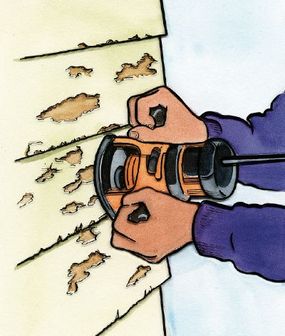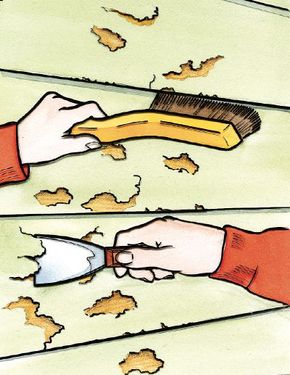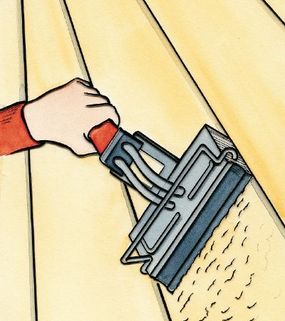If you're lucky, all your house may need before repainting is a good, healthy bath. Wash it down with a hose, and go over stubborn dirt with a scrub brush and warm, soapy water. Or wash it down with a power washer. If you're not so lucky, then you just have to face the fact that a time-consuming and dirty job lies ahead of you. Do the job well, and your paint job will not only look better, but it will last for five to eight years on average.
Start by thoroughly examining the outside of the house or outbuilding -- not just the exterior walls but under the eaves, around windows and doors, and along the foundation. Look for split shingles and siding, popped nails, peeling or blistering paint, mildew, and rust stains. Once you've identified the areas that need attention, roll up your sleeves and make the repairs.
Advertisement
Scraping
Use a wire brush and a wide-blade putty knife to remove small areas of defective paint. Scrub under the laps of clapboard siding as well as on downspouts and gutters. For speedier work on metal, a wire brush attachment on an electric drill will remove rust and paint with less effort. For more extensive paint removal, invest in a sharp pull scraper -- a tool with a replaceable blade that's capable of stripping old paint all the way down to bare wood with a single scrape. Hold the scraper so the blade is perpendicular to the wood, apply moderate to firm pressure, and drag it along the surface. Keep the blade flat against the wood so it doesn't gouge the surface.

Sanding
For smoothing the edges of scraped spots here and there, you can wrap a piece of sandpaper around a wood block. For larger areas, it's less tiring and more effective to use an electric orbital sander. Move it up and down or back and forth across the surface to remove old paint and smooth rough edges at the same time. Don't use an electric disc sander or a belt sander. Both can leave swirls or dips in the wood that will show through a new coat of paint.
Advertisement

